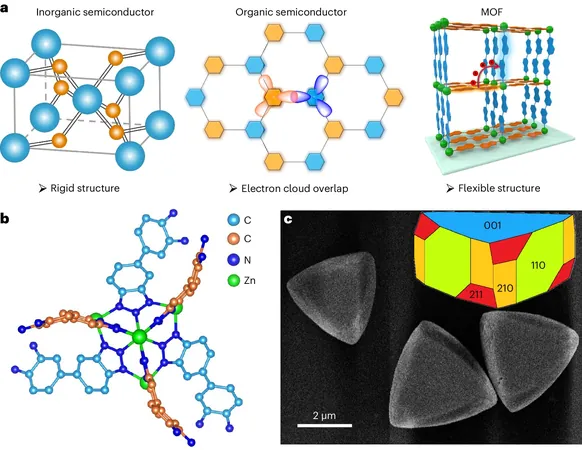
Breakthrough Catalyst Revolutionizes Water Splitting, Paving the Way for Cleaner Hydrogen Fuel!
2024-11-04
Author: Daniel
In an astonishing advancement in photocatalytic technology, researchers have unveiled a cutting-edge metal-organic framework (MOF) that dramatically suppresses charge recombination, a significant hurdle in photocatalytic water splitting for hydrogen production. This groundbreaking study, published in the prestigious journal Nature Chemistry, is capturing the attention of the scientific community and renewable energy sector alike.
The Holy Grail of Chemistry
Photocatalytic water splitting is often referred to as the "Holy Grail" of chemistry, given its potential to provide a sustainable source of hydrogen fuel. However, the process has been plagued by the issue of electron-hole recombination—a phenomenon that negates the efficiency of the reaction. Traditional methods to combat this challenge usually focus on the catalyst's structure in its ground state, yet this overlooks the crucial dynamics occurring within the excited state, where the actual electron-hole recombination happens.
Innovative Strategy Inspired by Nature
Taking inspiration from natural photosynthesis, where proteins cleverly adjust their shapes to facilitate electron transfer, the researchers devised an innovative strategy that harnesses excited-state structural transformations in artificial photocatalysts. Spearheaded by Professors Jiang Hailong, Luo Yi, and Jiang Jun from the University of Science and Technology of China (USTC), the team identified a particular MOF named CFA-Zn. This unique compound comprises closed-shell Zn2+ nodes linked by flexible organic linkers that are chemically identical but crystallographically independent.
The Mechanism of CFA-Zn
These versatile linkers function as electron donor-acceptor pairs, while the closed-shell Zn2+ framework effectively insulates the linkers chemically. This unique configuration allows CFA-Zn to construct a dynamic and adaptable microenvironment that mirrors the biochemical processes found in plant cells. Upon exposure to light, CFA-Zn undergoes a structural alteration that stabilizes excited-state electrons, thereby extending their lifespan and significantly enhancing the efficiency of overall water splitting.
Building on Prior Research
In a noteworthy juxtaposition, Prof. Jiang Hailong’s prior research had already advanced the understanding of how to engineer the microenvironment around catalytic centers. Specifically, his team utilized the inherent flexibility of MOF structures to develop adaptive catalytic sites, achieving remarkable selectivity for converting CO2 into methane (CH4).
A Game-Changing Revelation
Building upon these foundational insights, the latest study showcases the application of a dynamic MOF photocatalyst that effectively suppresses radiative relaxation—a game-changing revelation that holds promise for various photochemical processes beyond just water splitting. The innovative approach has earned accolades from reviewers, who hailed it as “a novel and disruptive concept” and “an exciting development” in the quest for more efficient photocatalytic materials.
Implications for the Future of Energy
As the world shifts towards greener and more sustainable energy solutions, this breakthrough offers a promising glimpse into the future of hydrogen production. With the potential to substantially improve energy efficiency and reduce reliance on fossil fuels, the implications of this research could be profound, setting the stage for a new era in renewable energy technology. How will this transformative catalyst reshape our approach to hydrogen production? The possibilities are endless!




 Brasil (PT)
Brasil (PT)
 Canada (EN)
Canada (EN)
 Chile (ES)
Chile (ES)
 España (ES)
España (ES)
 France (FR)
France (FR)
 Hong Kong (EN)
Hong Kong (EN)
 Italia (IT)
Italia (IT)
 日本 (JA)
日本 (JA)
 Magyarország (HU)
Magyarország (HU)
 Norge (NO)
Norge (NO)
 Polska (PL)
Polska (PL)
 Schweiz (DE)
Schweiz (DE)
 Singapore (EN)
Singapore (EN)
 Sverige (SV)
Sverige (SV)
 Suomi (FI)
Suomi (FI)
 Türkiye (TR)
Türkiye (TR)